| |
| Read/write head movements |
| |
Place the head under
the left digit of the string
1 state |
 |
 |
 |
 |
 |
| |
Place the head under
the right digit of the string
1 state |
 |
 |
 |
 |
 |
| |
Place the head under
the right digit of the string
2 states |
 |
 |
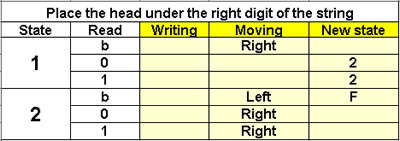 |
 |
 |
| |
Place the head under
the right digit
of the second string
4 states |
 |
 |
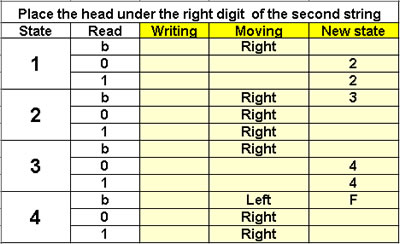 |
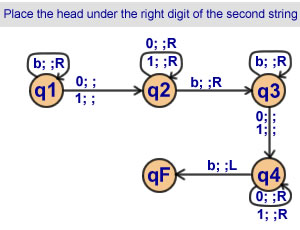 |
 |
| |
| |
| Character strings |
| |
Find the sequence
replace 0 by 1 and
replace 1s with 0s
2 states |
 |
 |
 |
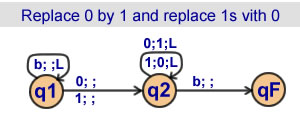 |
 |
| |
Move the 1 from left
to right of the suite
2 states |
 |
 |
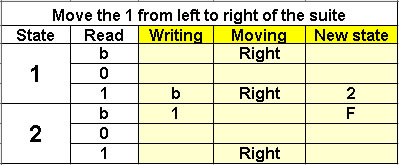 |
 |
 |
| |
Move each digit 1
one square to the right
3 states |
 |
 |
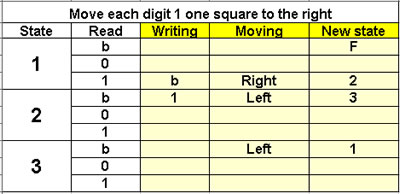 |
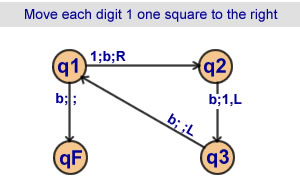 |
 |
| |
Concatenate two sequences of 1
4 states |
 |
 |
 |
 |
 |
| |
Parity of the number of 1
in a string
4 states
The head goes through the chain
and goes from state 1 to state 2
and vice versa each time
it reads a 1.
Depending on whether it ends
in state 1 or in state 2,
the number of 1 is even or odd. |
 |
 |
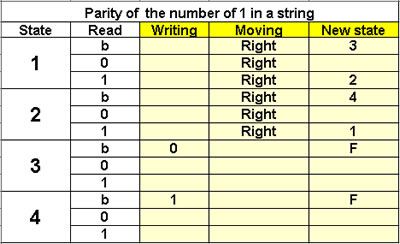 |
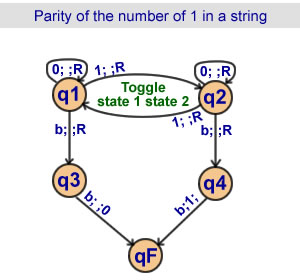 |
 |
| |
Determining if a chain
has an even number of 0's and 1's
6 states
|  |
 |
 |
 |
 |
| |
Move a string
one square to the right
4 states |
 |
 |
 |
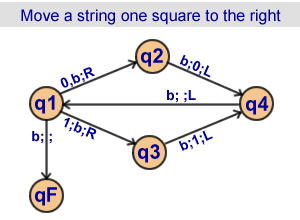 |
 |
| |
Concatenate two strings
4 states
State 1 brings the head
of read / write under the characters
right of the first string.. |
 |
 |
 |
 |
 |
| |
Double the number of elements
in a sequence by 1
3 states |
 |
 |
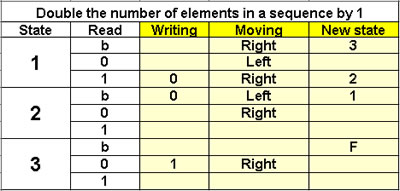 |
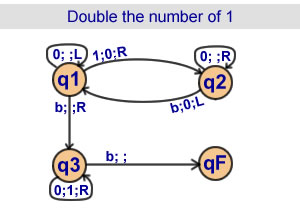 |
 |
| |
Double a sequence of 1
without using 0
4 states |
 |
 |
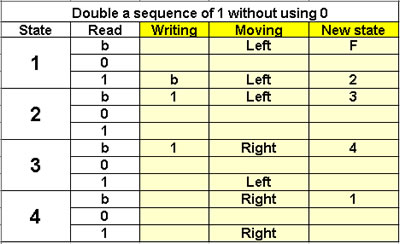 |
 |
 |
| |
Copy a string
9 states |
 |
 |
 |
 |
 |
| |
Cut a string in
two equal parts
11 states
String has an even number
of characters. |
 |
 |
 |
 |
 |
| |
Find the sub chain "0.1"
in a string
4 states |
 |
 |
 |
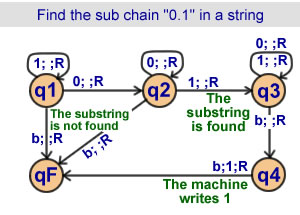 |
 |
| |
| The first calculations |
| |
Addition of 2 unaries
Solution 1
2 states |
 |
 |
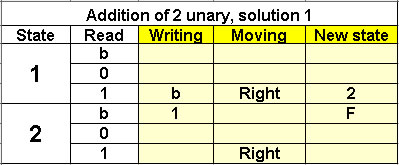 |
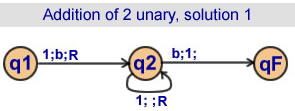 |
 |
| |
Addition of 2 unaries
Solution 2
Copy X to the right of Y
5 states |
 |
 |
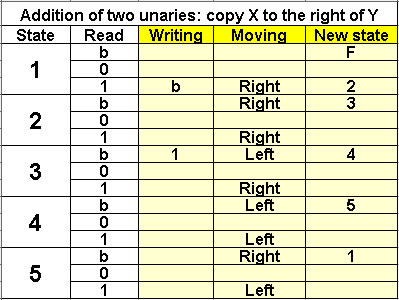 |
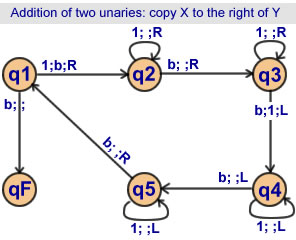 |
 |
| |
Subtract X from Y
with X < Y
3 states |
 |
 |
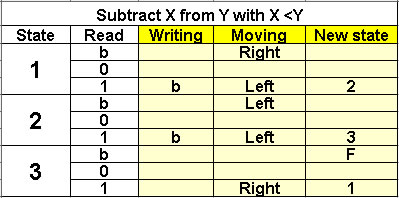 |
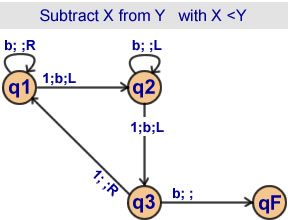 |
 |
| |
Multiplication of two integers
written in unary
10 states |
 |
 |
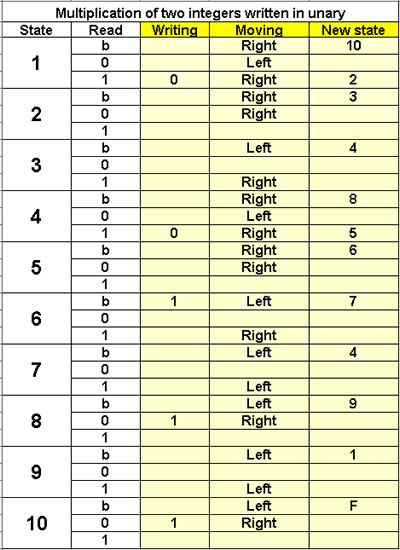 |
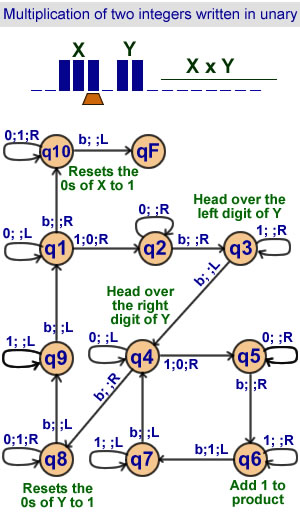 |
 |
| |
Euclidean division by 3
in unary
8 states |
 |
 |
 |
 |
 |
| |
Calculation of 2 n in unary
The machine treats the unary as
the binary to which it will
add 1 to obtain 2 n
6 states |
 |
 |
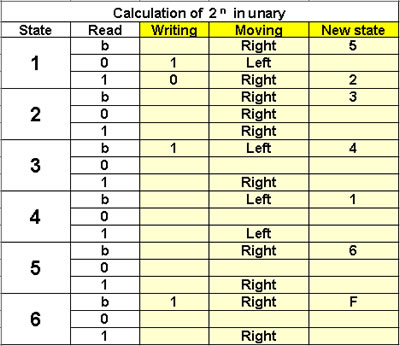 |
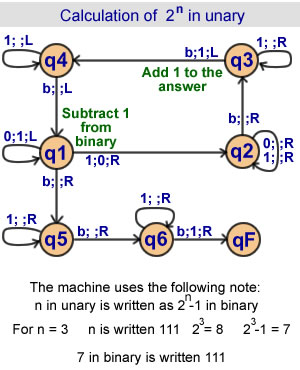 |
 |
| |
Comparison of two unaries
8 states |


|
 |
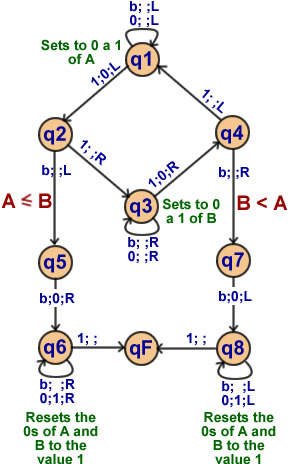 |
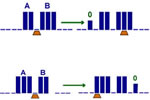 |
| |
| |
| First calculations with binary numbers |
| |
Writing a unary in binary
5 states |
 |
 |
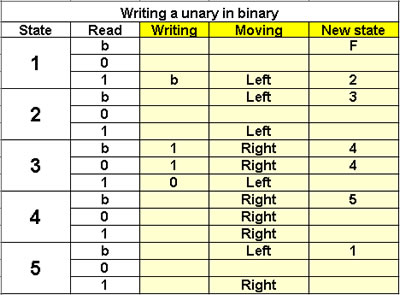 |
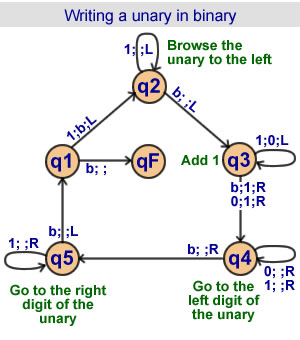 |
 |
| |
Writing a binary to unary
6 states |
 |
 |
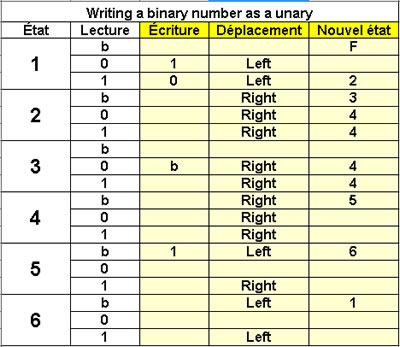 |
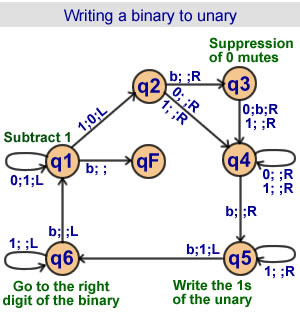 |
 |
| |
Add 1 to a binary number
1 state |
 |
 |
 |
 |
 |
| |
Subtract 1 from a binary
1 state
The binary is > 1 |
 |
 |
 |
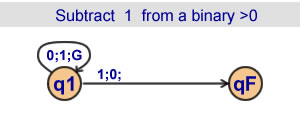 |
 |
| |
Addition of 2 binary numbers
6 states |
 |
 |
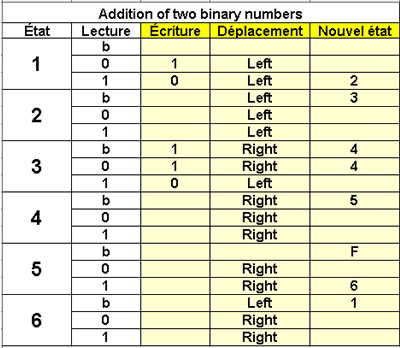 |
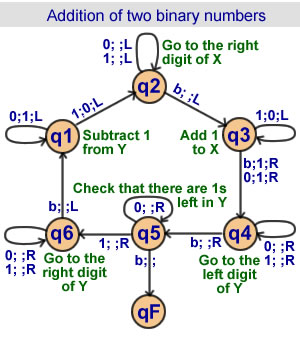 |
 |
| |
Subtract one binary from another
6 states
We assume X > Y > 0 |
 |
 |
 |
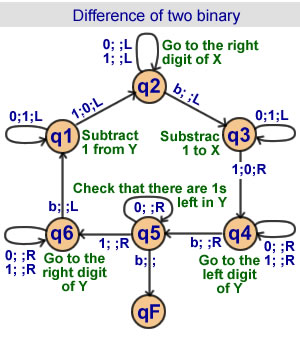 |
 |
| |
Difference of 2 binary
with deletion of 0
9 states
We assume X > Y > 0 |
 |
 |
 |
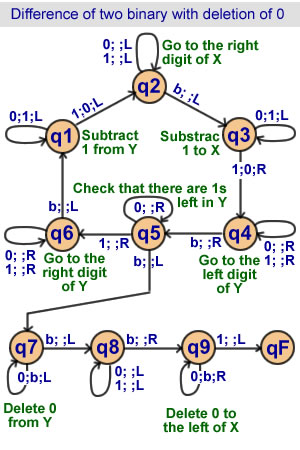 |
 |
| |



